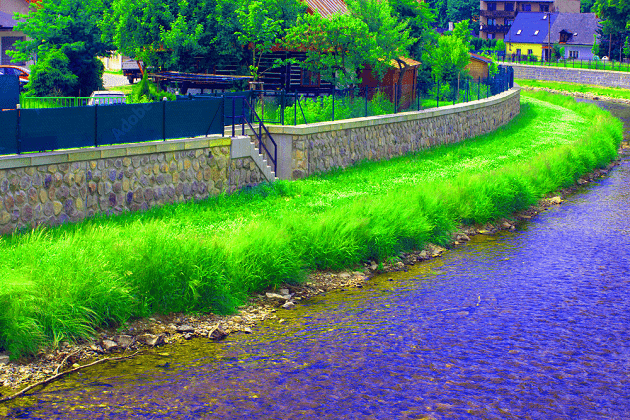How to Build a Retaining Wall on a River Bank
How to Build a Retaining Wall on a River Bank
Retaining walls play a crucial role in managing water flow and preventing soil erosion along riverbanks. If you’re considering constructing a retaining wall on a river bank, you’re making a wise choice to protect your property from the forces of nature. This article will guide you through the steps involved in building a retaining wall on a river bank, offering valuable insights to help you create a structure that is both effective and resilient.
1. Understanding the Purpose
Before you embark on building a retaining wall on a river bank, it’s essential to comprehend its primary functions. A retaining wall serves to prevent erosion, stabilize the soil, and manage water flow. It can also enhance the aesthetics of your property, making it more appealing and functional.
2. Assessing the Site
The first step in building a retaining wall on a river bank is to evaluate the site. Consider factors such as soil composition, water level fluctuations, and the angle of the river bank. This assessment will help you determine the type of retaining wall that suits your specific needs.
3. Choosing the Right Materials
Selecting the appropriate materials is crucial for building a durable retaining wall. Common materials used for riverbank retaining walls include concrete blocks, natural stone, timber, and interlocking blocks. The choice of material will depend on your budget, design preferences, and the structural demands of the site.
4. Planning and Design
A well-thought-out design is essential for the success of your project. You should consider factors like wall height, drainage systems, and the overall layout. Professional assistance or software tools can be beneficial in designing your retaining wall accurately.
5. Obtaining Necessary Permits
In some areas, building a retaining wall on a river bank may require permits. Check with your local authorities to ensure that you comply with regulations and obtain any necessary permits before starting your project.
6. Preparing the Site
Proper site preparation is crucial for the stability of your retaining wall. This may involve clearing vegetation, leveling the ground, and ensuring proper drainage. Take care to address any erosion issues before construction begins.
7. Building the Foundation
The foundation is a critical element of your retaining wall’s stability. A strong foundation ensures that the wall can withstand the pressure of the soil and water. The foundation may involve excavation and adding a base material, such as gravel or crushed stone.
8. Constructing the Wall
The actual construction of the retaining wall on a river bank involves placing the chosen materials in accordance with your design. Whether you’re using concrete blocks, natural stone, or timber, it’s vital to ensure proper alignment and secure connections between the units.
9. Incorporating Drainage
Effective drainage is crucial in preventing water from accumulating behind the retaining wall, which can lead to structural issues. Installing drainage systems, such as weep holes and gravel backfill, will help in managing water flow and reducing pressure on the wall.
10. Backfilling and Compaction
Once the wall is built, backfill the area behind it with suitable soil material. Compaction of the backfill is essential to prevent settling, which can weaken the retaining wall’s stability.
11. Finishing Touches
To enhance the aesthetics of your retaining wall on a river bank, consider adding decorative elements or planting vegetation around it. This not only adds to the visual appeal but also helps with erosion control.
12. Regular Maintenance
To ensure the longevity and effectiveness of your retaining wall, it’s crucial to perform regular maintenance. Inspect the wall for signs of wear and tear, addressing any issues promptly. Maintain the drainage system to prevent water buildup.
Conclusion
Building a retaining wall on a river bank is a substantial project that demands careful planning and execution. It is essential to understand the purpose of the wall, assess the site, choose the right materials, and obtain any necessary permits. A well-designed retaining wall can protect your property from erosion, manage water flow, and improve its overall appearance.
When constructing a retaining wall on a river bank, remember to incorporate proper drainage systems and follow best practices for foundation construction and backfilling. Regular maintenance is also key to preserving the wall’s functionality and appearance. By following these steps, you can create a resilient and effective retaining wall that serves its purpose for years to come.
For more detailed information and ideas on how to build a retaining wall on a river bank, visit our website at https://cheapretainingwallideas.com.
Build a retaining wall that not only stands the test of time but also enhances the beauty and value of your property while safeguarding it from the forces of nature.
